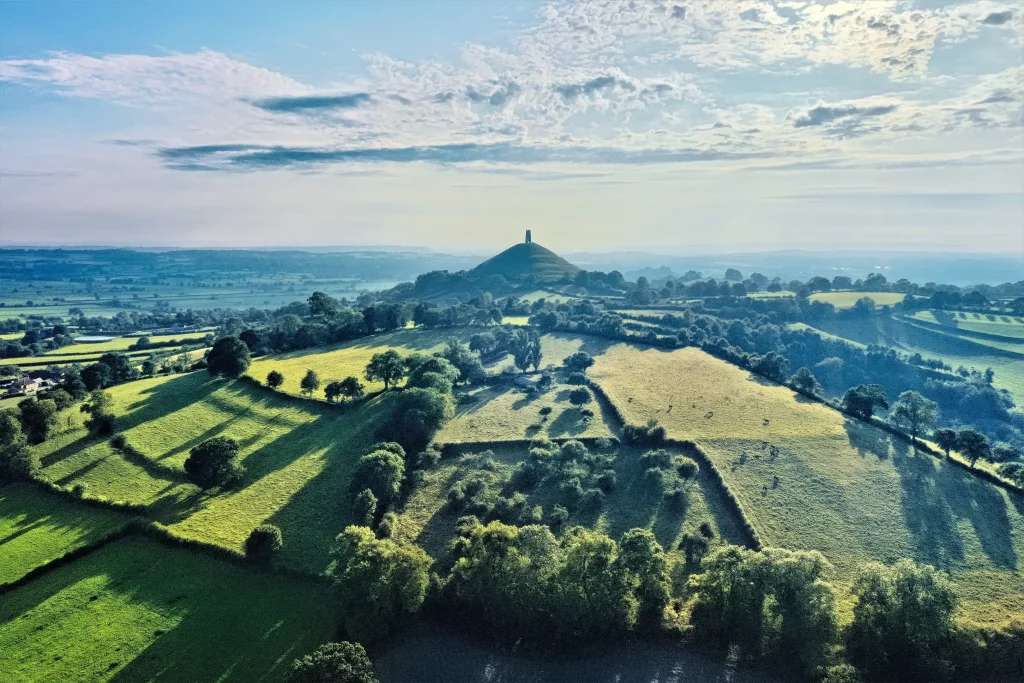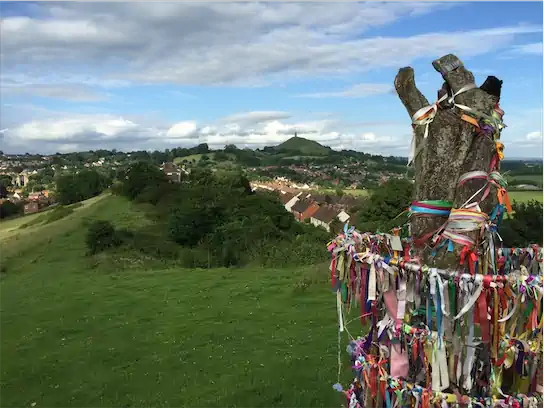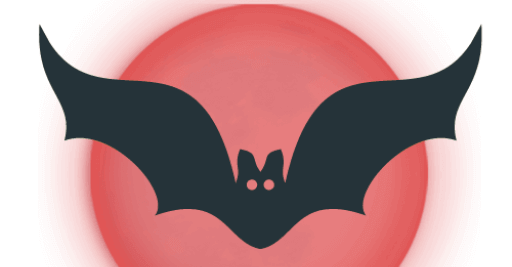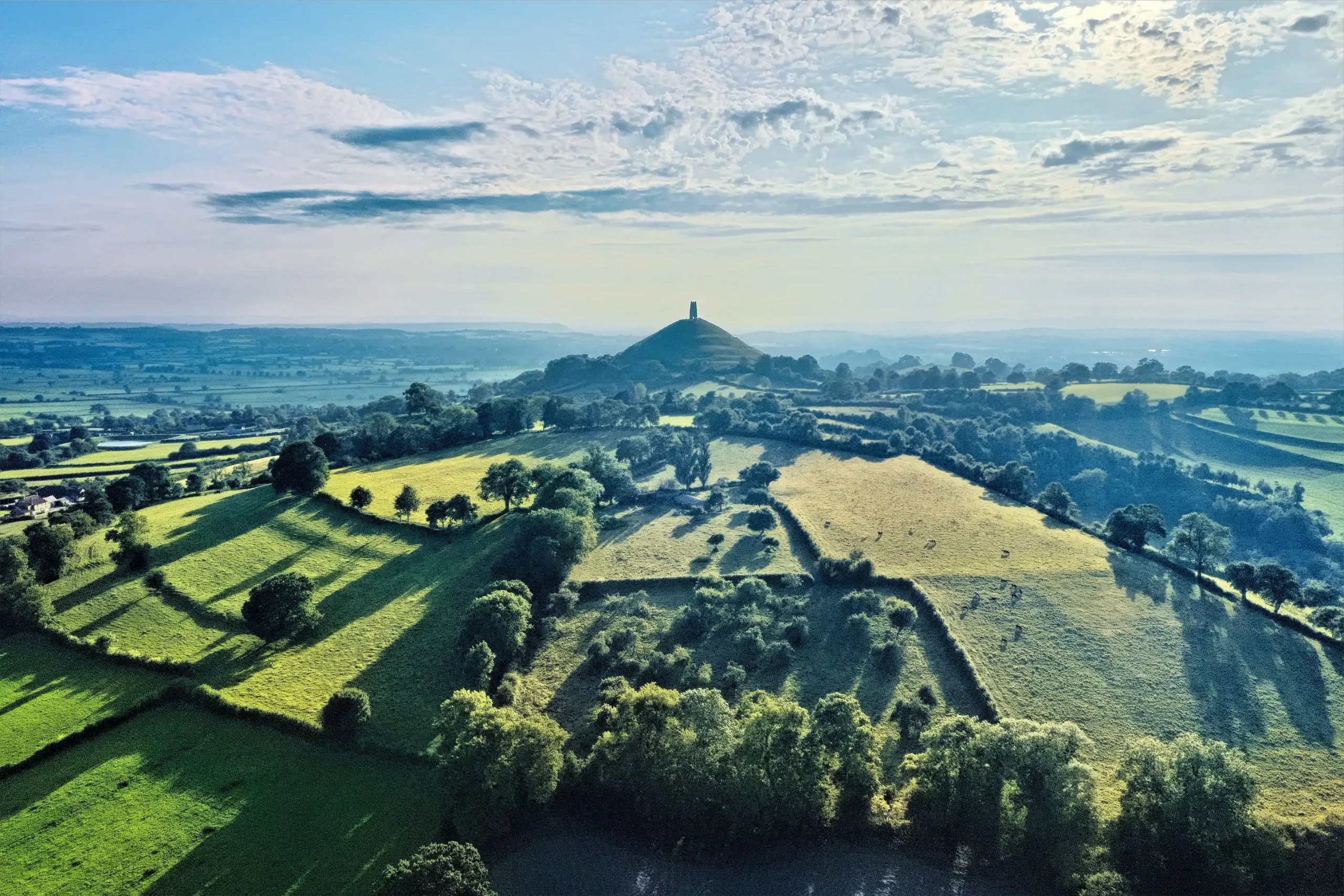Glastonbury Tor Ghosts

Glastonbury Tor is a small conical hill in Somerset, in southwestern England, that can be seen for miles away across the flat Somerset Levels.
Glastonbury is steeped in history and legend. The history of the tor dates back to before the Iron Age, when it was first settled by humans.
The Romans built a temple to the god Mercury on the top of the hill, and for centuries it was an important pilgrimage site for worshippers of the Roman gods.
In the early Dark Ages, the tor became associated with Christianity, and many stories and legends arose about the saints who had visited the site: particularly St. Bridget and St. Dunstan.
One of the most well-known legends associated with the Tor is that of St. Michael, who is said to have defeated a dragon while standing atop the hill. Today, Glastonbury Tor is still a popular tourist destination, and many people believe that it is haunted by the ghosts of its long and storied history.
The Abbey and The Tor
Don’t confuse Glastonbury Tor with the equally famous Glastonbury Abbey. The abbey is in the town centre. King Arthur’s grave was discovered here in the Middle Ages by the monks, apparently, though they could have been said to have had vested interests.
Here’s a link to my edition (all cleaned up) of Frederick Bligh-Bond’s story of psychic archaeology at the abbey that actually got him fired.
There are both Christian and Pagan legends about Glastonbury, and it draws both kinds of pilgrims.
There are plenty of sacred sites in Glastonbury. There is also Wearyall Hill, or Wirral Hill, where in the early 20th century they are said to have found the Holy Grail—the vessel used by Christ and his disciples at the Last Supper and brought to Glastonbury by Joseph of Arimathea after Christ’s crucifixion.
The history of the Tor and its connection to King Arthur
The Tor is a mysterious place with a long and rich history. For centuries, it has been associated with King Arthur and his battles against the Saxons. According to legend, Arthur often retreated to the Tor when he needed to regroup and plan his next move.
The Tor was also said to be the home of Gwyn ap Nudd, the king of the underworld. Some say that Gwyn still inhabits the Tor, and that his spirit can be seen roaming the caves and cliffs. Whether or not you believe in these legends, there is no denying that the Tor has a deep connection to our ancient past.

Ley Lines at Glastonbury Tor
For centuries, people have been fascinated by Glastonbury Tor and the mystery that surrounds it. Some believe that the Tor is a portal to another realm, while others believe it is a power spot where the Earth’s energy is especially strong. There are even those who believe that the Tor is aligned with ley lines, which are said to crisscross the globe and connect sacred sites. So, what are ley lines? And what is their connection to Glastonbury Tor?
What Are Ley-Lines?
In the 1920s, one man changed the way we thought about ley lines forever. Alfred Watkins was his name, and he thought that many ancient sites in Britain were linked by straight lines.
He called these lines “ley lines,” and his theory slowly caught on. Today, there are dozens of books and websites dedicated to ley lines, and some people believe that they have mystical power.
People say that ley lines are straight lines that connect important sites, like churches, ancient monuments, and sacred wells. Some people believe these sites are connected by an invisible energy force, and that this force can be harnessed for healing or other purposes.
The term “ley line” was first coined by Alfred Watkins in the 1920s. Watkins was traveling salesman and amateur archaeologist who noticed that certain sites in Britain seemed to be aligned in a straight line.
He wrote a book called “The Old Straight Track.”
Watkins’s theory gained traction in the 1970s, when a new generation of researchers took up his work. These researchers used sophisticated surveying equipment to map out potential ley lines, and they soon discovered hundreds of them crisscrossing the British Isles.
Do Ley Lines Really Exist?
The jury is still out on whether ley lines actually exist. Some scientists believe that they’re nothing more than coincidence, while others say that they could be caused by natural phenomena like fault lines or magnetic fields.
Glastonbury Tor is one of the most famous sites associated with ley lines. There are several ley lines that converge at the Tor, which is said to be a hotbed of mystical activity. If you’re interested in exploring these ley lines for yourself, there are plenty of resources available to help you get started.

How to visit Glastonbury Tor and what to expect
For centuries, pilgrims have journeyed to the Tor to worship at the remains of a 14th-century church. Today, the Tor is also popular with hippies and New Age travelers, who come to drum and dance around the ancient tower on top of the tor.
They come in rain and sun, but expect to see plenty of people smoking weed and playing music if you visit on a sunny day.
The views from the top of the Tor are breathtaking, so bring your camera. Just be prepared for a bit of a hike — it’s quite steep!
Some of the most famous ghost sightings at the Tor
The ancient stone walls of the Tor are said to be home to several ghosts and spirits. One of the most famous is the dragon light, which is said to appear on clear nights. The light is said to be the spirit of a dragon that was killed by St. Michael during the battle between good and evil.
Other ghosts said to haunt the Tor include a nun who committed suicide, and a soldier who was killed during the Civil War.
Glastonbury Tor is a mysterious place with a long and complicated history. Some say it is haunted by the ghosts of ancient Druids, while others believe it is the last resting place of King Arthur. Whatever you believe, there is no denying that the Tor is a fascinating place.
The Tor is said to be the site of many supernatural events, including the appearance of a ghostly white deer. In addition, there are numerous reports of unexplained lights and noises.
Whether or not you believe in ghosts, there’s no denying that the Tor is a fascinating place with a long history of mystery and intrigue.

In Conclusion, whether or not you believe in ghosts, Glastonbury Tor is worth a visit
Glastonbury Tor is a place that is rich in history and legend. If you live in, or are visiting, the United Kingdom, and are looking for a place to explore the paranormal, it is definitely worth a visit. Just be sure to go during daylight hours, and don’t forget to bring your camera! Who knows, you might just capture something strange on film.
Why not stay at the haunted George and Pilgrim’s Inn while in Glastonbury?

